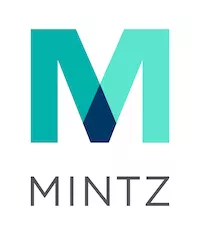This is the second post in our continuing series on the Medicare Access and CHIP Reauthorization Act (MACRA). Pub.L. No: 114-10. In addition to repealing our April 20th post, MACRA includes several other payment provisions and offsets totaling $39.5 billion in savings over ten years. This blog post highlights some of the key payment provisions and offsets in Title II and IV of MACRA:
Section 201: Extension of Work GPCI Floor
The Geographic Practice Cost Index (GPCI) adjusts Medicare payments for geographic variations in physicians' costs of providing care. There are three GPCIs: Malpractice, Physician Work, and Practice Expense. MACRA would extend the 1.0 floor on the Physician Work GPCI until January 1, 2018. The 1.0 value represents the average across all geographic areas. By extending the 1.0 floor the GPCI extension would prevent cuts of up to 3 percent in areas with an index of less than 1.0. This would be in the localities where the labor cost would be lower than the national average or 1.0.
Section 204: Extension of Increased Inpatient Hospital Payment Adjustment for Certain Low-Volume Hospitals
MACRA also extends an inpatient hospital payment adjustment for low-volume hospitals through fiscal year 2017. A low-volume hospital is defined as a hospital with less than 1,600 Medicare discharges and more than 25 miles away from any nearby hospital. Section 1886(d)(12) of the Social Security Act requires adjustment for these hospitals, which is now extended through fiscal year 2017.
Section 205: Extension of the Medicare-Dependent Hospital (MDH) Program
Under the MDH program, Congress has provided a special payment rate to hospitals qualifying as a MDH hospital. To qualify, a hospital must be located in a rural area, have 100 beds or less, not be the "sole community hospital," and have at least 60 percent of inpatient days or discharges covered by Medicare. They are paid on a blend of current the prospective payment system and cost. MACRA extends this favored reimbursement status through fiscal year 2017.
These provisions come as a relief to many rural hospitals and providers, which would have seen a decrease in their reimbursement if these provisions were not extended.
Section 221: Extension of Funding for Community Health Centers, the National Health Service Corps, and Teaching Hospitals
Funding for the Community Health Center (CHCs) program and the National Health Service Corps (NHSC) was set to expire at the end of September 2015. MACRA extends funding for these programs through fiscal year 2017, keeping the funding amounts for fiscal year 2016 and 2017 at the current fiscal year 2015 level. It also extends funding through fiscal year 2017 for the Teaching Health Center Graduate Medical Education Payment Program, which expanded residency training in community-based settings. It provides $60 million for direct and indirect graduate medical education (GME) payments to teaching health centers. Further, MACRA subjects the 2016 and 2017 funding to Public Law 113-235, which restricts the use of these funds for abortion services.
Section 402 Income-related Premium Adjustment for Parts B and D
The principal offset in MACRA is to increase the amount of premiums paid by high income Medicare beneficiaries. Currently, Medicare beneficiaries with incomes between $107,000 and $160,000 pay 50% of average annual per capita program expenditures; those with incomes between $160,000 and $214,000 pay 65%, and those with incomes over $214,000 pay 80%. MACRA would decrease the income level in these top three categories, making it so more individuals must pay additional premiums. Beginning in 2018, the income levels would be as follows:
- Income between $107,000 to $133,500 will pay 50% of average annual per capita program expenditures
- Income between $133,500 to $160,000 will pay 65%
- Income more than $160,000 will pay 80%
These levels would remain constant for 2018 and 2019. Beginning 2020, these thresholds would be updated annually based on inflation. This budget offset is expected to decrease direct spending by over $34.3 billion from 2018 to 2025.
For many years, increased beneficiary cost sharing has been a political "third rail' for Democrats. But liberal economists have pointed out that targeted cost sharing increases, not affecting the point of care, could be seen as both progressive taxes and not affecting utilization, which would be the case with increases to copayments and deductibles. Increased premiums for high income beneficiaries is just such an approach and has been in effect for the Part B premium since 2007.
Section 411: Medicare Payment Updates for Post-Acute Care Providers
MACRA sets Medicare reimbursements for post-acute care providers to increase by 1.0 percent in fiscal year 2018.
Section 412: Delay of Reduction to Medicaid Disproportionate Share Hospital Allotments
By statute, the federal government provides payments to Disproportionate Share Hospitals (DSH) for serving high numbers of uninsured and underinsured patients. It provides this funding through federal matches to Medicaid DSH payments. The Affordable Care Act (ACA) includes provisions to sunset this program by 2020 through annual reductions in federal match available to states. This is under the theory that the ACA would drastically reduce the uninsured population, partly as a result of Medicaid expansion. But with the 2012 Supreme Court decision giving the states the option not to expand their Medicaid programs, an option that many states have taken, a large number of uninsured people will remain in such states, and so Congress recognized the policy underpinnings for the DSH phase-out no longer apply.
MACRA amends the reduction of Medicaid DSH payments by removing the reductions for fiscal years 2014 through 2016 and extending the reduction to 2025.
Section 414: Adjustments to Inpatient Hospital Payment Rates
For some time, the Centers for Medicare & Medicaid Services (CMS) has recognized that one way hospitals have made up for lost reimbursement under the prospective payment system (PPS) is to improve their documentation and coding practices. As a result, CMS has tried to reduce PPS rates to offset these gains in reimbursement. One of Congress's first attempt to weigh-in on this issue came in the American Taxpayer Relief Act of 2012, which required CMS to establish base rate reductions in FY2014 through FY 2017 to offset the $11 billion in increased payments resulting from document and coding improvements. MACRA prohibits CMS from recouping the overpayments from fiscal year 2010. CMS' approach was to reduce payment by a 0.8 percent from fiscal year 2014 to fiscal year 2017. CMS was then expected to provide a one-time 3.2 percent payment increase in FY2018. However, MACRA would require CMS to phase in the 3.2 percent increase by 0.5 percentage points each year from 2018 through 2023.
Section 504: Modifying Medicare's Durable Medical Equipment Face-to-Face Encounter Documentation Requirement
The Face-to-Face Encounter program was implemented to ensure that a qualified practitioner (physician assistant, nurse practitioner, or clinical nurse specialist) personally met with a beneficiary and determined the need for items and services. But implementation has been fraught with significant compliance problems and lack of clarity. One such area was where a qualified practitioner provided the face-to-face encounter. Under the ACA, which extended the face-to-face encounter program to durable medical equipment, only the physician was authorized to document the face-to-face encounter even when another qualified practice actually performed the encounter. Under MACRA, these qualified practitioners are now permitted to document the encounter for items that require a written order for the item prior to delivery of the items.
Section 521: Extension of Two-Midnight PAMA Rules on Certain Medical Review Activities
For some period of time, CMS has been concerned that hospitals have been trying to game the PPS system by classifying patients as inpatients in order to seek favorable reimbursement. Since 2013, CMS has tried to clamp down on this practice by creating a rule of presumption that a patient is deemed to be an inpatient if he/she stays in the hospital over two midnights. This is known as "the two-midnight rule." Under the Protecting Access to Medicare Act of 2014, the Medicare administrative contractors (MACs) were to monitor hospitals' compliance with this requirement through a "probe-and-educate program" from October 1, 2014 to March 31, 2015. At the same time, the Recovery Audit Contractors (RACs) could not perform post-payment inpatient reviews on inpatient claims with dates of admission from October 1, 2013 to March 31, 2015. But MACRA extends the MACs probe and educate program to September 30, 2015 and extends RACs' post-payment audit prohibition until September 30, 2015.
Future posts in this series will cover (1) program integrity and fraud and abuse provisions; and (2) miscellaneous provisions.
The content of this article is intended to provide a general guide to the subject matter. Specialist advice should be sought about your specific circumstances.




